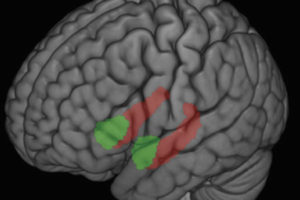For hundreds of years, Tibetan monks and other religious people have used meditation to calm the mind and improve concentration. This week, a new study shows exactly how one common type of meditation affects the brain.
Using a scanner that reveals which parts of the brain are active at any given moment, the researchers found that meditation increased activity in the brain regions used for paying attention and making decisions.
The changes were associated with the practice of concentration meditation, says study leader Richard Davidson, professor of psychology and psychiatry at the University of Wisconsin School of Medicine and Public Healthand the Waisman Center. Practitioners were instructed to focus attention intently on a stimulus, and when the attention wandered off, to simply bring the attention back to the object, explains Davidson.
"In one sense, concentration mediation is ridiculously simple, but in another, it’s extraordinarily difficult," adds Davidson. "If you try it for two minutes, you will see that it’s not so easy. Minds have a propensity to wander."
In collaboration with colleagues Julie Brefczynski-Lewis and Antoine Lutz of the UW–Madison W.M. Keck Laboratory for Functional Brain Imaging and Behavior, Davidson compared newly trained meditators to people with up to 54,000 hours of meditation experience. The study is being published this week in the online edition of the Proceedings of the National Academy of Science.
After the novices were taught to meditate, all subjects underwent a magnetic resonance imaging scan of the brain while they were meditating. Among all experienced meditators, the MRI scan found greater activity in brain circuits involved in paying attention.
"We found that regions of the brain that are intimately involved in the control and regulation of attention, such as the prefrontal cortex, were more activated in the long-term practitioners," Davidson says.
A different picture emerged, however, from looking only at the most experienced meditators with at least 40,000 hours of experience. "There was a brief increase in activity as they start meditating, and then it came down to baseline, as if they were able to concentrate in an effortless way," says Davidson.
Effortless concentration is described in classic meditation texts, adds Davidson. "And we think this may be a neural reflection of that. These results illustrate one mechanism by which meditation may act in the brain."
While the subjects meditated inside the MRI, the researchers periodically blasted them with disturbing noises. Among the experienced meditators, the noise had less effect on the brain areas involved in emotion and decision-making than among novice meditators. Among meditators with more than 40,000 hours of lifetime practice, these areas were hardly affected at all.
"Most people, if they heard a baby screaming, would have some emotional response," Davidson says, but not the highly experienced meditators. "They do hear the sound, we can detect that in the auditory cortex, but they don’t have the emotional reaction."






